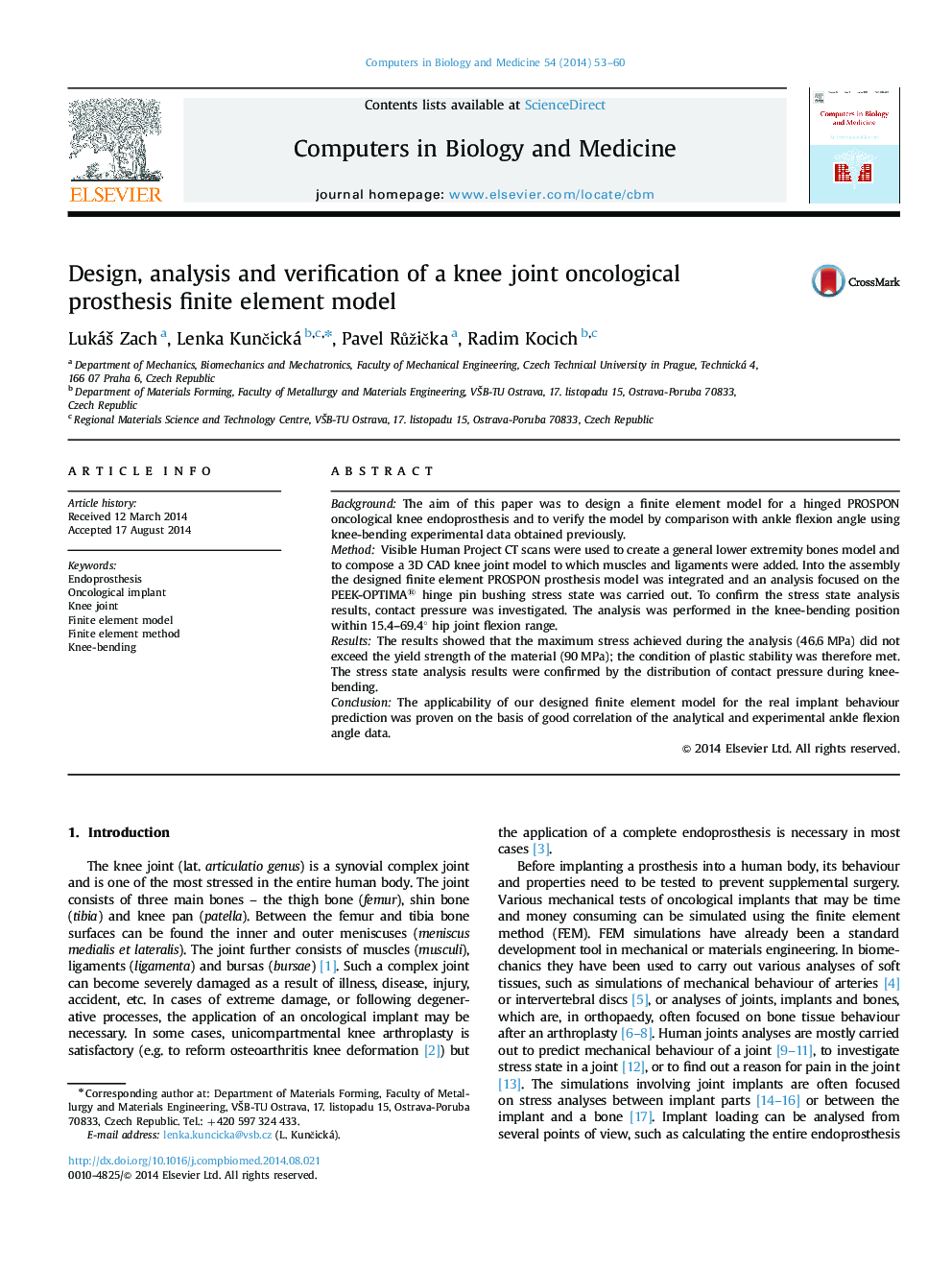| کد مقاله | کد نشریه | سال انتشار | مقاله انگلیسی | نسخه تمام متن |
|---|---|---|---|---|
| 504904 | 864450 | 2014 | 8 صفحه PDF | دانلود رایگان |
• PROSPON oncological implant FE model developed and validated.
• The PEEK-OPTIMA® hinge pin bushing analysed in knee-bent position.
• Stress distribution in accordance with contact pressure distribution.
• Maximal Von Mises stress (46.64 MPa) in accordance with material yield strength.
• The final model in accordance with the real endoprosthesis behaviour.
BackgroundThe aim of this paper was to design a finite element model for a hinged PROSPON oncological knee endoprosthesis and to verify the model by comparison with ankle flexion angle using knee-bending experimental data obtained previously.MethodVisible Human Project CT scans were used to create a general lower extremity bones model and to compose a 3D CAD knee joint model to which muscles and ligaments were added. Into the assembly the designed finite element PROSPON prosthesis model was integrated and an analysis focused on the PEEK-OPTIMA® hinge pin bushing stress state was carried out. To confirm the stress state analysis results, contact pressure was investigated. The analysis was performed in the knee-bending position within 15.4–69.4° hip joint flexion range.ResultsThe results showed that the maximum stress achieved during the analysis (46.6 MPa) did not exceed the yield strength of the material (90 MPa); the condition of plastic stability was therefore met. The stress state analysis results were confirmed by the distribution of contact pressure during knee-bending.ConclusionThe applicability of our designed finite element model for the real implant behaviour prediction was proven on the basis of good correlation of the analytical and experimental ankle flexion angle data.
Journal: Computers in Biology and Medicine - Volume 54, 1 November 2014, Pages 53–60
